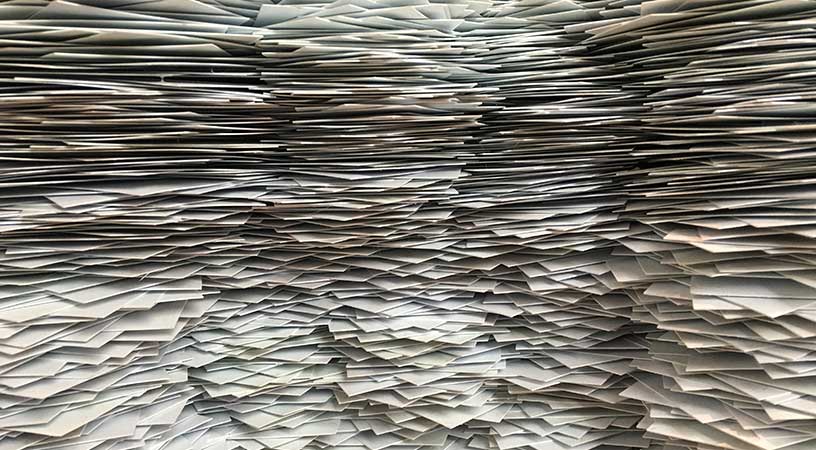The pulp and paper are water intensive industry. The production of paper involves wood, rags, old paper, hemp, wheat and rice stalks, bamboo, esparto grass, bagasse, etc. as the raw material. The quantity of wastewater and its quality depends on the grade and quality of the paper handled, the degree and type of treatment given to it.
Let’s take a look at the characteristics and process of wastewater treatment in pulp and paper industry -
Characteristics of Wastewater
The waste water in pulp and paper industry is usually alkaline in nature, and has high suspended solids, high total solids, high COD and relatively low BOD. The approximate analysis of waste water from a typical pulp and paper industry is the following:
- pH value: 8.0 - 9.0
- Total solids: 1500 - 2500 mg/l
- Suspended solids: 600 - 1500 mg/l
- COD: 300 - 2500 mg/l
- BOD: 150 - 1000 mg/l
Chemical Processes in Pulp Industry
For producing a fine pulp for print paper, mainly two chemical procedures are used.
- Kraft Process
- Sulphite Process
The Kraft Process is an alkaline process. The disadvantage of the process is the odour which comes from thiols and sulfides. The pulp also has to be bleached more when compared to the sulphite process. The pH in the Kraft process stands between 8 and 9. BOD (Biochemical Oxygen Demand) and COD (Chemical Oxygen Demand) depend on the kind of wood. Normally the BODs range between 1000 – 2000 ppm, and CODs between 4000 – 7000 ppm.
The Sulphite Process is an acidic process. The effect is not the same as the alkaline process. This procedure is more sensitive and environment-friendly. The boon of this process is more process variation and producing conditions without unwanted thiol and sulfite production.
Semi-chemical Process
The mostly used semi-chemical CTMP (Chemi-Thermo-Mechanical Pulping) is highly efficient (approx. 95%) and the consumption of water is not as high as that of the other described processes. But it definitely needs more energy to produce the pulp.
In the pulp industry, the wastewater that has to be treated generally are:
- Bleaching Solutions
- Washing and Emptying
- Evaporation Condensates
The wastewater is treated by anaerobic wastewater treatment.
Wastewater from Paper Industry
The paper is created from new or recycled pulp. Many chemicals such as kaolin, CaCO3, talc and/or TiO2 are added to the pulp to bring the white colour in the paper. Chemicals like organic fillers, i.e starch, latex, colours, aluminium sulfate etc. are used to make paper of different properties and kinds.
Paper can again be discoloured, which can be done in two different process.
- Washing the pulp with high amount of water
- Washing with low amount of water with additions like sodium silicates, sodium carbonate, fatty acids or non-ion detergents
The wastewater of this industry also contains particles like plastics, metal parts (paper clips, etc.) and other wastes that have to be removed.
The main units of the wastewater plant for paper industry, are the aeration basin and the sedimentation basin. The effluent treated with culture of microorganism (activated sludge) is present in high concentration, in the aeration basin. Activated sludge plant at kraft pulp mill have retention time of about 15-48 hr. The solid concentration in the activated sludge systems is usually 2000-6000 mg/L. The normal loads are between 0.05 and 0.1 kg BOD/kg sludge, for extended aeration. The temperature required for operating these process is about 35-37°C. The nutrients concentration in relation to the organic matter is important in the effluent treatment.
The normal efficiencies figures are between 85 and 98% for BOD removal and 60-85% for COD removal. The COD (Chemical Oxygen Demand) of treated effluent represents how effective a treatment technology is in its ability, to remove the total organic material present in the influent. The characteristics of the effluents are dependent on the production process and the raw materials.
The plants that apply the best available technologies have their emissions controlled, and reflect minimum environmental impact on the wastewater discharge.
With Rochem India, you are at ease of having superior quality wastewater equipment. We’ve served many industries and catered to their specific needs of water treatment equipment. Not only that, we proactively recommend and suggest equipment that can work optimally for you. Our wastewater treatment is best suited for all your needs and necessities.
We offer excellent water treatment and recycling technology that adapts to the changing needs of our customers. Get in touch with us through our mail at sales@rochemindia.net, or leave a message on our social media accounts - Facebook, Instagram, LinkedIn and YouTube or call us on +91 (22) 6704 9000 for any enquiries and further information.

